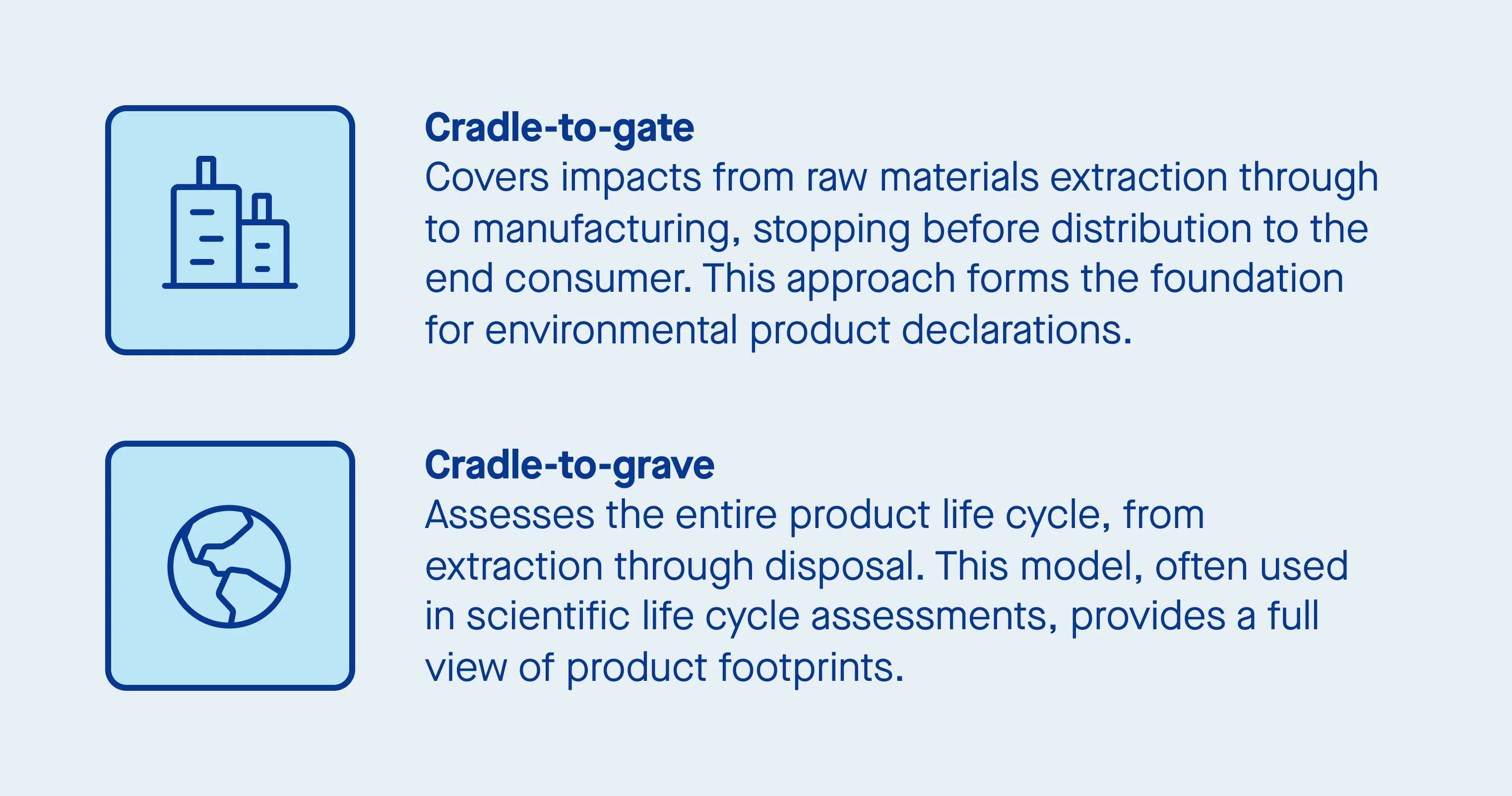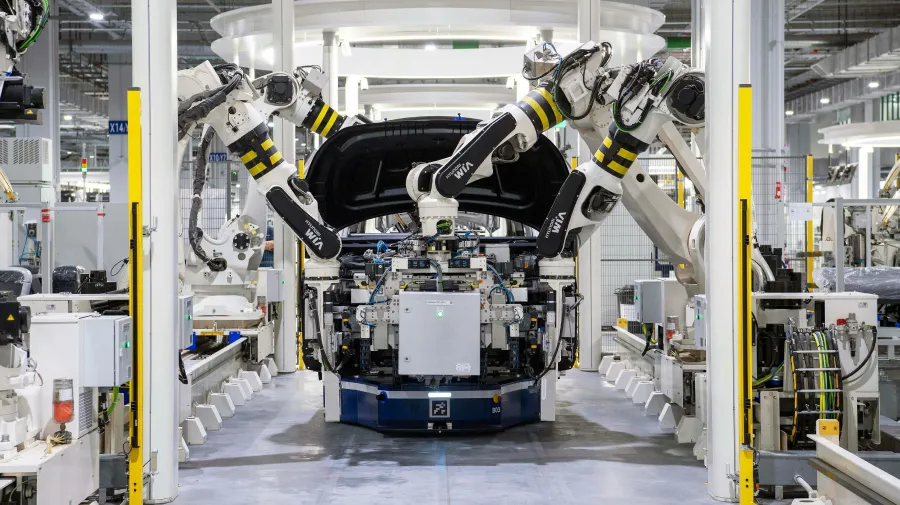As businesses work toward a more sustainable future, understanding and reducing their total greenhouse gas (GHG) emissions is essential. The product carbon footprint (PCF) is a critical metric in assessing environmental impact, complementing the corporate carbon footprint (CCF) approach. While CCF accounts for emissions tied to an organization’s entire operation, PCF measures GHG emissions specifically at the product level, covering the entire product life cycle. This article explores the methods, challenges, and benefits of measuring both PCF and CCF, providing companies with actionable insights to support emissions reductions and progress toward a climate-resilient, carbon-neutral world.
PCF vs CCF
There are two primary ways to assess a company’s impact on climate change: at the organizational level or at the product level. These are known as the corporate carbon footprint (CCF) and product carbon footprint (PCF). While these approaches are sometimes seen as distinct, they offer complementary insights. Together, they provide a comprehensive view of a company’s sustainability efforts and alignment with climate goals.
What is a Corporate Carbon Footprint?
The corporate carbon footprint quantifies the greenhouse gas emissions generated directly or indirectly by all the company’s activities. This includes energy consumption, transportation, and procurement, all in line with the GHG protocol framework. CCF follows a structured approach with three scopes to categorize emissions, distinguishing between direct and indirect emissions that occur throughout the value chain.
What is a Product Carbon Footprint?
A product carbon footprint (PCF) is a measure of a product’s carbon emissions generated throughout its entire life cycle. This includes emissions from raw material extraction, manufacturing, transportation, storage, use, and disposal. PCFs are typically expressed in carbon dioxide equivalents (CO2e), which standardize the impact of different greenhouse gases into a single metric. Understanding a product’s carbon footprint is essential for companies aiming to enhance their sustainability strategies and reduce their overall environmental impact.
Key differences between the PCF and the CCF
-
The measurement and reporting structure
The CCF reporting structure adheres to a well-established GHG protocol framework, organized into three scopes that encompass 26 emissions categories. These cover emissions from energy, employee travel, purchased goods, and more. For consistency, companies follow this structured reporting framework regardless of industry.
In contrast, product carbon footprints align with a life cycle assessment approach. Each phase of the product’s life is considered and measured to produce an accurate footprint for the product itself, including its carbon emissions. This life cycle assessment helps organizations evaluate the GHG emissions from cradle to gate and across the product’s use and disposal phases, offering insights into potential emissions reductions within the product’s journey.
-
Boundaries in CCF and PCF
A key difference between PCF and CCF is the scope of boundaries. While CCF covers emissions across the value chain, product carbon footprint boundaries are tied to the product’s life stages. PCF is measured using two approaches:

-
Reporting periods
PCF reporting must stay up to date, as the environmental impacts of products can evolve with new materials and processes. According to the ISO-14067 standard, a product carbon footprint assessment requires updating every five years. The corporate carbon footprint, meanwhile, is generally updated annually, with digital platforms enabling regular tracking and monitoring of changes.
Benefits of PCF and CCF
Benefits of the corporate carbon footprint
The CCF allows companies to meet reporting requirements for frameworks like SBTi, CDP, and CSRD, which set the standard for transparent emissions tracking and reporting. With a quantified corporate carbon footprint, companies can develop targeted reduction plans, set science-based targets, and engage various departments like finance and procurement to support broader climate goals.
Benefits of the product carbon footprint
Although two corporate footprints cannot be compared, product footprints measured with the same life cycle stages can be, providing a significant competitive edge. For example, environmental product labelling allows consumers to make greener choices. In Europe, the Product Environmental Footprint (PEF) initiative supports this approach, helping consumers identify products with a lower impact on climate change.
Product life cycle accounting also supports ecodesign by highlighting the total greenhouse gas emissions across every stage of a product’s life within the supply chain. With clear visibility into each phase, companies can prioritize effective, targeted emissions reductions for specific stages, minimizing environmental impact. The product carbon footprint also enables companies to align product portfolios with carbon-neutral standards. Achieving organizational carbon neutrality does not automatically mean all products meet these standards, but PCF can help bridge that gap.
Digital tools as a compass for navigating CCF and PCF
Both corporate and product carbon footprint assessments are valuable, and digital platforms can make tracking and managing these footprints more efficient. Digital tools ensure:
Reliable data
Accurate data is essential for both CCF and PCF assessments. A good ESG data management platform provides audit-ready data traceability, ensuring that strategic decisions are based on reliable information.
Flexible reporting
Adaptable ESG tools enable companies to switch between frameworks and track product life cycle phases, whether for internal reporting or regulatory compliance.
Value chain engagement
Effective product carbon footprint assessment depends on supplier participation. With integrated digital tools, companies can engage suppliers in data collection and maintain long-term collaboration for accurate emissions tracking.
By combining corporate and product carbon footprint assessments, businesses gain a fuller picture of their environmental impact, guiding them toward sustainable practices that align with a carbon-neutral future.



